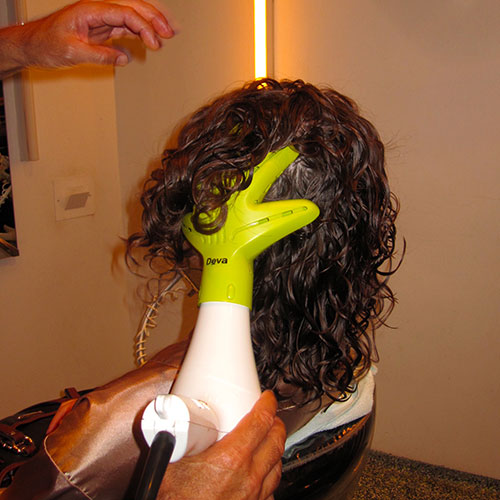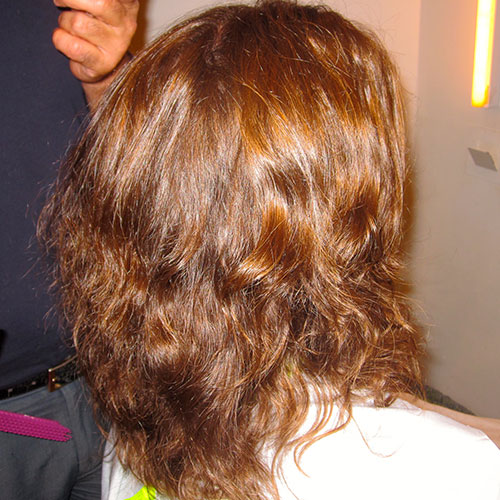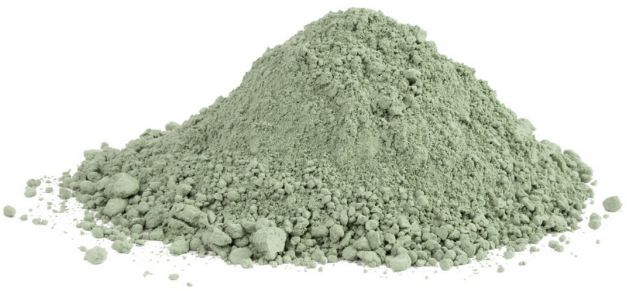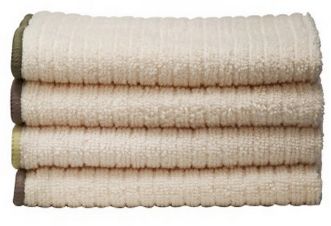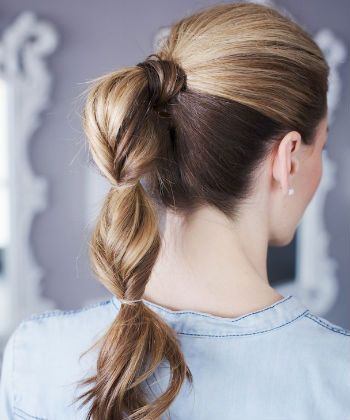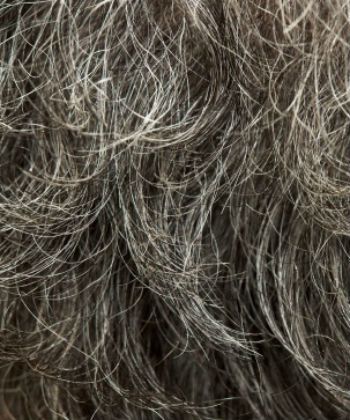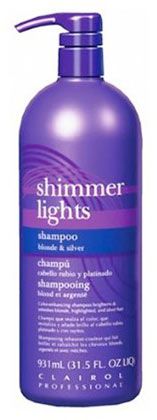Search Results: Claire Aviles

We know the horrors of a bad curly cut, and so many of our readers ask for haircut advice daily. So when NaturallyCurly contributor Claire Aviles was in need of a trim, she documented her experience for us to see her transformation.
What is a Deva Cut?
The Deva Cutting technique is a technique used by the Devachan Salon for cutting curly hair. Curly hair is cut in its natural form: dry, not wet. Each curl is individually shaped and the style is based on the individual. You even get a personal curl care lesson before you go!
Update* Following the original publishing of this article I received a lot of questions about where people can get a DevaCut. You don’t have to live in NYC to get a Deva Cut. “Deva Inspired Stylists” work all over the country. You can find one near you by checking out this link and entering your zip code. You can also enter your zip code in NaturallyCurly’s Salon Finder to read reviews by NaturallyCurly community members of curl stylists as well. I would definitely encourage you to try a Deva Cut! I had an amazing experience.
You can see more images of Deva Cut hair transformations here.
Deva Cut at Devachan Salon
What is Castor Oil?
According to Sunny Isle (producers of Jamaican Black Castor Oil”>, this oil will strengthen and increase the length of hair faster than other oils due to its ash content. This occurs from a manual grinder crushing the beans, then roasting to a 100% pure, dark brown and organic oil. Both regular and black castor oils contain ricinoleic acid, an anti-inflammatory that helps maintain a healthy scalp for better growth. Castor oil contains vitamin E as well, which moisturizes and boasts anti aging properties to dry or sagging skin.
” src=”https://diana-cdn.naturallycurly.com/Articles/45_pjimage-33.jpg”>
Split End Mender
Castor oil combats split ends, hair breakage, and dryness. The vitamin E and omega-6 fatty acids are great for repairing the health of your hair. They will put a stop to the split ends and breakage.
How to use it:
Mix castor with a lighter carrier oil (olive oil or jojoba oil are great options”> and comb it through your hair before washing your hair.
Anti-Aging
Castor oil smoothes wrinkles and tone your skin. Use pure, unrefined and virgin castor oil–this explains how the oil was extracted. It is the highest quality oil. Castor oil will moisturize dry skin, reducing the appearance of wrinkles and other marks by stimulating the production of collagen and elastin. Dip a cotton ball in the oil and apply it directly to your skin. Wash it off after an hour.
” src=”https://diana-cdn.naturallycurly.com/Articles/jU_pjimage-31.jpg”>
Acne Fighter
Castor oil is antibacterial and antifungal. It also contains Ricinoleic acid which inhibits the growth of bacteria, therefore treating acne without drying out the skin on your face. If you are struggling with acne, wash your face with warm water before bed. This opens your pores. Massage a cotton swab of castor oil into your skin and leave it on overnight. The next morning, cleanse your face in the morning using cold water. Don’t forget to change your pillowcase after using the oil.
Hair Growth
While castor oil cannot make the strands of your hair thicker, it can improve scalp health which can lead to greater hair density. Use it on your eyebrows or eyelashes to stimulate healthy growth.
How to use it:
Rub the oil over your brows or lashes each night (for the best results”> before bed.
Recommended products
You probably associate clays with beauty treatments such as facials and body masks, but did you know that you could use them on your hair?
This ingredient draws toxins out of your hair, leaving it refreshed and shiny, with great volume. There are three clays that are known to be great for all types of hair:
1. Bentonite Clay
It is named for its largest known deposit in Fort Benton, Wyoming. Bentonite clay is a gray/cream colored clay composed of aged volcanic ash. When combined with water, it swells and like a sponge, absorbing toxins. Here’s a great recipe for a bentonite clay cleanser, courtesy of CurlyNikki and HippieChicChick.
You will need
- Bentonite clay
- Apple cider vinegar
- optional: Aloe vera juice and your favorite essential oil
Directions
1. Use plastic or wooden utensils to combine bentonite clay and equal parts ACV and aloe vera juice—metal will lessen the effects of the bentonite.
2. Add a few drops of an essential oil for extra benefits. The mixture should be the consistency of cake batter.
3. Section your hair, apply the mixture from root to tip, then allow it to sit for 15 to 20 minutes under a plastic conditioning cap.
4. Rinse your hair with lukewarm water; ensure that the clay is completely washed out of your hair, or the clay will dry out your hair. Follow your rinse with a deep conditioner and style as usual.
2. French green clay
Also known as sea clay, French green clay contains a variety of healing elements, including magnesium, calcium, and potassium, among others. It is often used in spa treatments, including facials and body masks, because it is great for removing dead skin cells.
The clay can also be used to cleanse oily hair types—it will draw dirt, oils, and toxins from the hair. The following is a very simple recipe for a “clay lotion” that will leave you with healthy, detoxified hair.
You will need
- French green clay (true French Green Clay will be green, not white or gray in color”>
- Milk
- Your favorite essential oil
Directions
1. Mix 1 teaspoon of green clay, 8 ounces of milk, and a few drops of your favorite essential oil–for oily hair, I recommend lavender, eucalyptus, rosemary or basil.
2. Stir and apply the lotion on your scalp and throughout your hair. Leave the lotion for 15 to 20 minutes before rinsing and shampooing as usual.
3. Rhassoul Clay
Rhassoul clay originates in Morocco and can be used in soaps, shampoos, and skin conditioners. Like the aforementioned clays, it is incredibly mineral-rich. Try using rhassoul clay in a deep conditioner (recipe from Delicious Obsessions“>
You will need
- Rhassoul clay
- Coconut milk
- Honey
Directions
1. Mix 4 tablespoons of Rhassoul clay, 5 tablespoons of coconut milk, and 2 tablespoons of honey. The final mixture should be smoother and thinner than a face mask so that it spreads easily over your hair.
2. Apply the mixture to your hair and massage it into your scalp.
3. Cover your head with a shower cap and leave it on your hair for 30 to 60 minutes. Do not leave the clay mixture for longer than an hour or it will begin to dry your hair out. Finally, rinse it out in the shower and shampoo/condition as usual.
Have you used clay in a DIY recipe before?
As a curly girl, you probably know that a microfiber towel is the best option for drying your hair. Microfiber towels absorb water much more effectively than their cotton counterparts, and without rubbing! This means there is less friction between the towel and the hair, therefore less breakage and less frizz.
The following towels are made for drying everything from cars to pets to dishes, and they are all great options for drying your curly hair!
5 Unsual Hair Towel Options
How to Use Vodka for Hair
Vodka can be incorporated through major components of your regimen. It can be added to shampoo, conditioner, and be used as a rinse. By adding a shot to your 12-ounce bottle of shampoo or cowash it can further help to remove build up on your hair and scalp. Shake the bottle so that the vodka is evenly distributed throughout the product and use as directed. If you have dandruff, there’s an extra bonus. Vodka can help to alleviate an itchy scalp and reduce dandruff. For a rinse, mix a tablespoon of vodka and a cup of water and pour over your hair after deep conditioning. Your hair should look clean, shiny, and more luscious.
DIY Vodka Rinse
There are also claims that vodka helps prevent hair loss. The Beauty Gypsy provides a great recipe to stimulate healthy hair growth, cleanse the scalp and remove toxins:
- Mix a tablespoon of organic honey and onion juice in a jigger of vodka
- Apply on your scalp.
- Leave it in your hair overnight and wash off in the morning.
Best in Moderation
Although vodka could have many positive benefits for your hair, it is important to remember that it should be used in moderation. If used too frequently or not diluted, vodka could dry the natural oils from scalp and hair. And there are several other concerns: can you add vodka to your hair care routine if your hair is color treated? Is it safe to use on your hair in the winter, when your scalp is already dry? Some are still hesitant about vodka being beneficial for your hair at all. Hair loss expert Samuel Lam, MD, is one of them: “Although I cannot seriously answer the question of whether vodka does anything special for hair, I can say that there are a lot of unproven home remedies, naturopathic, and other alternative therapies that have been touted to work but have not panned out.”
Do you use vodka in your hair regimen?
Need another reason to love marshmallows? You already know that they are delicious in hot chocolate, but did you know that the root of althaea officinalis or “marshmallow plant” is great for your hair?
Tons of Mucilage = Detangled, Soft Hair
Marshmallow root is popular in the hair care world because it contains a high percent of mucilage—a thick, gluey substance produced by nearly all plants. Mucilage takes on a slippery texture when mixed with water, which makes it great for detangling and softening hair. Products like Kinky Curly Knot Today boasts “organic marshmallow root” in its ingredients, which explains why it is so effective! Marshmallow root tends to soothe a dry or itchy scalp also.
Want to try it? Read on for a great, all-natural detangling recipe!
You Will Need:
- 1 ¼ cup water
- ¼ cup dried marshmallow root (you can find it online or in a natural foods store”>
- 1 tbsp apple cider vinegar
- ½ tbsp olive oil or jojoba oil
Directions:
- Combine the marshmallow root and water in a small pot and simmer over medium-low heat for 15 to thirty minutes. This “activates” the mucilage. Remove the pot from the stove and let the mixture cool.
- Strain the mixture, reserving the liquid.
- Add the apple cider vinegar and olive oil or jojoba oil.
- Store the mixture into a spray bottle and use as needed! Be sure to shake the mixture before spraying it on your hair.
If you’re looking for an even simpler recipe, stop after step two. Then use the mixture as a hair rinse in the shower.
Everyone has days whenever they just cannot be bothered to spend time on their hair. Here are a few options for your lazy hair days.
Easy Mid-Week Hairstyles
 NaturallyCurly: Please introduce yourself!
NaturallyCurly: Please introduce yourself!
Rachel Asakome: Hello, my name is Rachel Asakome and I am from Nigeria.
NC: How and when did you start embracing your curls?
RA: I have been natural for about 5-6 years now. I started truly embracing my curls in August 2011. I went natural because suddenly, all the hair on the back of my head fell off! So in 2008, I decided to cut my hair and let it grow out, so I could relax it again! When I first went natural, I didn’t know what to do…I didn’t think that I needed to do anything special, and I treated my hair as if it were relaxed. Then I realized that my hair was growing really slowly and in a search for remedies, I stumbled across a video talking about how natural hair wasn’t considered beautiful. At that point, I decided it was my mission to show everyone just how beautiful kinky curly hair could be. I have fallen in love with my hair and it has responded to my love by growing like crazy!
NC: What’s your current routine?
RA: On a wash day, I wash my hair with my homemade rhassoul clay shampoo, then follow with a homemade deep conditioner. My deep conditioners usually consist of shea butter, coconut oil, honey, aloe vera gel, neem oil, argan oil and palm kernel oil. After mixing all the ingredients together, I cover my hair with a plastic cap and sit under the steamer for about 20 minutes.
I wash my hair every two weeks but in between washes, I condition my hair with pure coconut oil. I also spray it with water and aloe vera juice at least once every two days, depending on how my hair feels. Some days after spritzing my hair, I’ll add oil.
 NC: What are your favorite hairstyles to wear with your curls?
NC: What are your favorite hairstyles to wear with your curls?
RA: I wear braids occasionally, usually when I have exams! But typically, I just rock updos. They are quick and easy, low-manipulation protective styles.
NC: What are your must-have products and tools?
RA: My favorite products are rhassoul clay, coconut oil, and shea butter. I need to have then somewhere in my routine! My favorite tools are my applicator bottle and wide tooth comb.
NC: What about your hairstylist?
RA: I don’t have a hair stylist. I do my hair myself, except I want to braid it. I believe that no one can take care of your hair better than you can. That being said, the woman who braids my hair is an excellent Yoruba lady that does exactly what I tell her…she she parts my hair with her fingers and remembers to spritz my hair with water before fixing my braids! She is awesome and really attentive to my hair.
NC: What do you do at nighttime for your hair?
RA: Before I go to bed (if my hair isn’t in a set style”>, I spray water and aloe vera juice on my hair, then seal in the moisture with an oil or butter, twist it in sections and finally, wrap it in a satin cap. If my hair is already in 100% protective style braids, I just wrap it in a satin cap and hop into bed.
NC: What reaction did you get when you first decided to go natural?
RA: A few of my friends had already gone natural, so it wasn’t a big deal. But I always got lots of weird looks at salons. Every time I walked through the door, I would hear, “Do you want to relax it?” before I even opened my mouth! My favorite comment was from a male friend of mine, who said, “You think this is hair?! Relax it!”
NC: Did you big chop or transition?
RA: I big chopped. In the beginning, I kept my hair in braids a lot because I had no idea how to style it! I thought the only way my hair could look nice was in a braid or weave; I didn’t realize that my own hair could be beautiful without extensions. I initially thought it was childish to have your natural out because in my country, only a high school girl or a child would have natural hair.
NC: What is the best thing about being curly?
RA: Versatility! I can do almost anything with my hair: braid it, wear it wavy or in tight curls, straighten it,or even make it into a fro-hawk! My friends always expect me to do something wonderful with my hair.NC: How do you think having curly hair impacts your life?
RA: In the beginning, it used to slow me down a lot because of the time it took to detangle and the endless fights I used to have with my hair. But now, I am so used to it. I get my hair in a beautiful style on a Sunday night and that’s it for the week! All the time it takes to detangle, wash and condition my hair is just another part of my life…I simply set aside time for it, as I do with everything else.
NC: What would you tell others to encourage them to embrace their curls?
RA: I usually tell people to accept themselves the way they are. In order for negative comments to not get you down, you have to be completely satisfied with yourself and recognize that what you do with your hair or your life is your concern. I also tell people to accept that their hair can’t do certain things anymore. When you have kinky curly hair there is nothing that you can do to make it look bone straight or relaxed every day without damaging your hair. Just accept that you look different and work with the new you!!
NC: Tell us about your current and upcoming projects!
RA: I am currently finishing up with school. I also just started a natural hair blog aimed at providing natural hair growth tips to 4C naturals or kinky curly naturals. It’s also meant to be a general guide to healthy living and wellness, but I get so many hair questions that I never have time to post anything else! It’s important that naturals with tightly curled hair (like me”> understand that their hair is beautiful and can be managed, just like everyone else’s. I intend to start selling organic hair and skin products as soon as I am done with my university program. I have a Masters in finance, but natural hair is my first love!
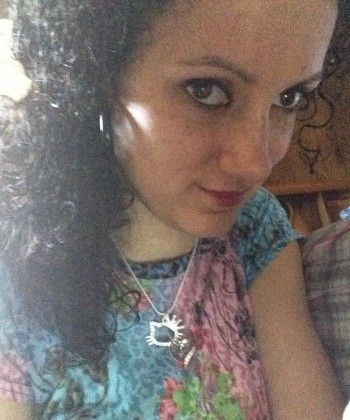 NaturallyCurly: Please introduce yourself!
Gloria: My name is Gloria. I am thirty-one years old and the mother of a ten-year-old girl.
NaturallyCurly: Please introduce yourself!
Gloria: My name is Gloria. I am thirty-one years old and the mother of a ten-year-old girl.
NC: How and when did you start embracing your curls?
Gloria: I have always embraced my curls, but I only recently learned to enjoy them.
NC: What’s your current routine?
Gloria: I wash my hair 3-4 times a week and I leave in the conditioner for as long as possible (usually twenty minutes”>. I like to switch up my products every now and then; I am currently using Herbal Essences Hydra-licious Shampoo and Conditioner. NC: From start to finish, on a curly day, what’s your process?Gloria: Pretty simple…I wash and condition, then use L’Oreal Everstyle Free Curl Defining Gel and sometimes I add Suave Moroccan Argan Styling Gel. I always air dry my hair.
NC: What are your favorite hairstyles to wear?
Gloria: I like to leave my hair down and loose, but occasionally I’ll wear it in a ponytail.
NC: What are your must-have products and tools?
Gloria: One of my must-have products is a good conditioner (a favorite is Mixed Chicks leave-in, which is also a great curl definer”>. I also need a wide tooth comb.
 NC: What about your hairstylist?
NC: What about your hairstylist?
NC: What do you do at nighttime for your hair?
Gloria: I put it in a loose bun or leave it down.NC: What reaction did you get when you first decided to go natural?
Gloria: I have always been natural, and the reactions are mixed. Some love it, and others constantly ask why I don’t give in and straighten it.
NC: Did you big chop or transition? For how long?
Gloria: I did not big chop by choice! I was in need of a trim desperately but I had waited too long and the ends were very dry and damaged. The stylist went scissor happy and I almost ended up with a bob! It was a very disappointing situation. and the stylist went scissor happy so I almost ended up with a bob! It was a very disappointing situation.
NC: Did you ever have curly girl insecurities?
Gloria: The only insecurity I have is shared by many fellow curlies…frizz.
 NC: What is the best thing about being curly?
NC: What is the best thing about being curly?
Gloria: It looks beautiful, it is easy and quick and I cannot imagine my hair any other way! It makes me who I am. It is part of my personality.
NC: How does having curly hair impact your everyday life?
Gloria: I have had people come up to me and just touch my hair and I’ve had others ask if it is real! It is definitely a conversation starter. I love it!
NC: What would you tell others to encourage them to embrace their curls
Gloria: Not only is curly hair amazing, but it is also time saving and you get the best of both worlds…you can alternate between straight and curly.NC: Tell us about your current and upcoming projects!
Gloria: I do not have any upcoming projects but I do love to write and read, so hopefully my dream of having my own book will happen! For now I am balancing work and being a mommy while trying out curly hair products until I find the ones that suit my needs.Michelle Zimmer: Hello, my name is Michelle Zimmer. I am forty-three, I have three children, and I live in Bradford, Ontario.
NC: How and when did you start embracing your curls?
MZ: I have always embraced my curly hair…it’s way too much work to straighten it, and it looks better curly!
NC: What’s your current routine?
MZ: I wash my hair twice a week and use a Conair Shine Blow Dryer with a diffuser, never touching my curls, with my head upside down.
NC: So from start to finish, on a curly day, what’s your process?
MZ: On the days that I don’t wash my hair, I will use a one-inch curling iron on a few curls to reduce frizz. NC: What are your favorite hairstyles to wear with your curls?
NC: What are your favorite hairstyles to wear with your curls?
MZ: I love to wear it wild and natural!
NC: What are your must-have products and tools?
MZ: I have tried a ton of salon products and keep going back to Got2B from the drug store. I love the deep hydration that it gives my hair! I also love my Conair dryer and wiggo diffuser.
NC: What about your hair stylist?
MZ: My hair is medium length. I would love to grow it longer but every stylist always says, “I’ll take one inch off ” and ends up cutting it shorter each time.
NC: Do you color your hair?
MZ: My hair is light blonde. I go to the salon for low lights and I color my roots at home–it’s too expensive to always head to the salon!
NC: What do you do at nighttime for your hair?
MZ: I pull all my hair on top of my head and loosely tie it with a scrunchie. Then, in the morning, I release it and pow! looks just as good as yesterday.
 NC: What reaction did you get when you first decided to go natural?
NC: What reaction did you get when you first decided to go natural?
MZ: I have always worn my hair natural. Once in a blue moon, the hair dresser will straighten it, but no one really likes it.
NC: What is the best thing about being curly?
MZ: Curly hair is so easy and free. I wish that more young girls would get rid of the flat iron and embrace their natural curls!
NC: How does having curly hair impacts your life?
MZ: People often give me compliments and say they love my hair. It makes me feel great.
NC: What would you tell others to encourage them to embrace their curls?
MZ: Put down the flat iron and let your natural hair flow…it’s who you are! Love yourself and your curly hair. The bigger your hair the better!
Coloring your grays is always an option, but we love seeing women who embrace their naturally graying hair… just as they embrace their naturally curly hair! Check out the our tips for going gray gracefully.
9 Tips For Graying Gracefully
NC: How and when did you start embracing your curls?
LD: I started embracing my curls about two years ago when the “natural hair movement” became the fad. I realized how beautiful curly hair is, and ever since I have been embracing mine!NC: What’s your current routine?
LD: I wash my hair with SheaMoisture Moisture Retention Shampoo and then I condition with Pantene Moisture Renewal Conditioner. I then finger comb my hair and rinse. Finally, I apply the SheaMoisture Curl Enhancing Smoothie to my soaking wet hair and air dry.NC: So from start to finish, on a curly day, what is your process?
LD: On a curly day, I do a hot oil treatment, wash my hair, condition of course and use my SheaMoisture Curl Enhancing Smoothie. I use the raking and smoothing method.
 NC: What are your favorite hairstyles to wear with your curls?
NC: What are your favorite hairstyles to wear with your curls?
NC: What are your must-have products and tools?
LD: My must have product is the SheaMoisture Curl Enhancing Smoothie! Without that product I don’t know if my hair would look as fab as it does :”>NC: What do you do at nighttime for your hair?
LD: I wear a satin cap. NC: How often do you cut your hair?LD: I get a trim once every six months.
NC: What reaction did you get when you first went natural?
LD: I have always been natural, but I would always wear my hair straight, so I had a lot of heat damage. I went completely heat-free in December of 2011.
NC: Did you ever have curly girl insecurities?
LD: My hair was always so huge, so when I was younger people called it a “lion mane.” This upset me and I took a straightener to my hair. I straightened it almost everyday! NC: What is the best thing about being curly?
NC: What is the best thing about being curly?
LD: Curly hair is diverse. You can wear lots of different hair styles that others can’t!
NC: How do you think having curly hair impacts your life
LD: I think curly hair has impacted my life in a good way. I see naturals and they stop me and say, “Oh my gosh, I cannot wait until my hair becomes your length!” or “People with hair like yours are the reason I went natural!”
NC: What would you tell others to encourage them to embrace their curls?
LD: Curly hair is beautiful and unique! It’s the hair on your head and you were born with it…love it!
NC: Tell us about your current and upcoming projects!
LD: I am currently a full time student at Stratford High School…I guess you can say I have a typical teenage life. Right now I’m getting ready to apply for colleges!
Yani Gallagher: My name is Yani Gallagher. I am twenty years old and I live in Tacoma, WA.
NC: How and when did you start embracing your curls?
YG: I started embracing my curls about two years ago. I began my journey in September of 2011 when I began transitioning from years of over-processing my hair with relaxers, dyes, and just not taking proper care of my hair. I still wore my hair straight most of the time until I big chopped.NC: What’s your current routine?
YG: My current regimen is pretty simple. I usually section my hair and co-wash it every week. I shampoo about twice a month. I almost always finger detangle to prevent breakage. Then I dry my hair with a t-shirt and apply a moisturizer and an oil to seal the moisture in. I let my hair air dry and never use any heat on my hair. I also use a henna treatment every couple months which helps protect my hair & retain length. At night, I use a satin pillowcase to reduce frizz and breakage. NC: What are your favorite hairstyles to wear with your curls?
NC: What are your favorite hairstyles to wear with your curls?
NC: What are your must-have products and tools?
YG: The products I use vary on my budget at the time, what’s available, etc, but I try using as many natural products as possible. I use Organix Thick & Full Biotin & Collagen Conditioner to co-wash my hair, Cantu Shea Butter Coconut Curling Cream or anything from their natural line gives me amazing definition and a mix of oils that I put together…usually it consists of vegetable glycerin, jojoba oil, grapeseed oil, avocado oil and a little bit of rosemary essential oil. The only “tools” I use on my hair are my fingers!NC: What reaction did you get when you first decided to go natural?
YG: When I was first going natural, I kept it to myself because it was personal to me. I wasn’t too worried about what other people thought because it’s MY hair. When people started to ask questions, they were nothing but curious and supportive. It was never a big deal to anyone, but I was asked a few times how my hair got so thick and healthy! For the most part I have gotten nothing but compliments and support.NC: Did you big chop or transition and for how long? Did you ever have any curly girl insecurities?
YG: I transitioned for almost two years. During the time I was cutting off the damaged hair and perm little by little while protective styling. About seven months into my transition, I got my hair cut into a short bob but still had relaxed ends. I continued the transition up until this past July when I went ahead and big chopped the last three inches off and became a full-fledged natural! NC: What is the best thing about being curly?
NC: What is the best thing about being curly?
NC: How do you think having curly hair impacts your life?
YG: My hair has impacted my life because before I was natural, I had little knowledge about my type of hair or how to care for it. I was adopted and my parents are Caucasian, so although they weren’t to blame, I just never had the knowledge or background of how to keep my type of hair healthy. It was always dry and breaking off. Growing up, I was self conscious because I didn’t fit into the “norm” of the black culture. I started my natural hair journey as a way to come into myself and become more comfortable with who I am as a person. It was a huge learning process that taught me a lot about self- acceptance and being proud of who I am. It also made me turn to a more natural diet and lifestyle in general.NC: What would you tell others to encourage them to embrace their curls?
YG: For anyone who is having problems embracing their curls, I would tell them not to worry about what anyone thinks. It’s YOUR hair and it’s growing from YOUR head for a reason. Own it and feel beautiful. It’s okay to be different and to march to the beat of your own drum. No one has the right to say anything about your hair…you should never feel bad about being yourself. Even though your hair is just that, hair, it’s still part of you and you should always be confident in who you are!NC: Tell us about your life and what you’re up to!
YG: Currently, I am in the process of finding a good loctician. Yes, I’m locking and can’t wait! I LOVE my curls I have always admired dreadlocks and my next journey will be just another lesson and experience for me. Another new start! Aside from my hair, I am working as a Licensed Massage Therapist and I’m in the process of becoming a Reiki Practitioner. My whole transition was actually while I was studying in school and the alternative approach in the bodywork profession also helped me accept the change I was going through. I plan to also start working towards becoming a certified doula in the near future as well.You can find Yani on Instagram.
Senitra Syas: My name is Senitra Syas and I am a second year graduate student at Georgia College & State University. My field of study is Logistics and Supply Chain Management, and I am looking to one day be a program manager for a project management firm. I was natural for nine years before my first relaxer and then began my transition to become natural for the second time on September 25, 2009.
NC: How and when did you start embracing your curls?
SS: I began embracing my curls during my transition. I had friends who were either natural or going natural, and they all encouraged me. I was that girl who would just pat my relaxed edges (to prevent burning from my future touch up”> and say, “No girl. Never. I’d NEVER go natural. I like my hair straight, it’s easiest. It’s the best way for ME. Natural wouldn’t look good on my anyways.” So no, I didn’t always embrace them, but oddly enough I decided to transition directly after I had my hair fried, dyed, and laid to the side the way I liked it. After that fresh relaxer, I realized that I didn’t want to be relaxed anymore!
NC: What’s your current routine?
SS: I co-wash every week and shampoo once a month. I deep condition after every wash, but every now and then I skip my pre-poos when I am short on time. I get a blowout and trim every 8-12 weeks, and flat iron about 1-2 times a year.
NC: From start to finish, on a curly day, what’s your process?
SS: If it’s a wash day, I’ll do the whole nine: a pre-poo of some sort (either hot oil treatment, or the honey highlighter”>, and then I’ll wash, detangle, and style with flat braids. I do this in the afternoon when I have no plans to go anywhere so it can dry overnight.
When it comes to every day after my wash, I use the LOC (liquid, oil, cream”> method to set my curls before bed. Once I have flat braided them, I’ll put on a satin bonnet and then call it a night! On my lazier nights, I’ll pineapple my hair and then sleep on my satin pillow case. NC: What are your favorite hairstyles to wear with your curls?
NC: What are your favorite hairstyles to wear with your curls?
SS: Currently, braid-outs are my go-to style! I enjoy doing flat braids (or cornrows”> that allow me to frame my face with my hair. When that gets old, I usually go for a high pony puff and may embellish the front a bit (with flat twists, a braid headband, etc”>.
In the cooler months, I usually get mini twists all over my head without any extensions. That way I can wear all of the colorful beanies I have!NC: What are your must-have products and tools?
SS: I must have my tortoise shell detangling comb, Denman brush, a good deep conditioner, a leave-in, and an oil. I consider myself a serious P.J. (product junkie”> so I have a problem settling down on a particular product. I am currently using a Garnier Fructis leave-in, Eden and Tresemme shampoo and conditioner sets, and an oil from the Curls product line.
NC: What reaction did you get when you first decided to go natural?
SS: I actually had a family member say I was going to look like I came off of the cover of “National Geographic” magazine. He didn’t say it to be mean, he was stating it as fact (according to him”>, but he was too late. I was WAYYY beyond the point of being discouraged; that season didn’t last too long for me. Once I put my mind to something “that’s a wrap!” I had my moments when I would have a pity party and think that no one would love me except for my Chihuahua Roxy, but that was only in the beginning. After the first three months or so, I started getting the hang of transitioning styles, so I encouraged myself when needed.
NC: Did you big chop or transition and for how long? Did you ever have any curly girl insecurities?
SS: I transitioned for one year and three months, though the goal was two years. I just go too anxious. At the one year mark, I cut a huge chunk of relaxed ends out of the middle of my head because of sheer curiosity, and after that I was HOOKED on MY texture. It was incredible to see what my curls looked like when they were unleashed, with no relaxed ends weighing them down.
 NC: What is the best thing about being curly?
NC: What is the best thing about being curly?
SS: The confidence I feel. I just feel REAL. 100% really and fully me. No one can take my texture from me, or my genuine appreciation of it. My hair has so much to offer and so much untapped potential; it’s full of surprises, and I just love it!
NC: How do you think having curly hair impacts your life?
SS: It has done good things for my wallet, that is for sure! I used to get my relaxers religiously and I was paying $55 a pop. And I save a tone of time…I used to travel over two hours for touchups!
Being curly has also affected the way I feel and the way I see myself. I walk around with hair I was born with, and that makes me feel special.NC: What would you tell others to encourage them to embrace their curls?
SS: It is more mental than anything. So many people are concerned with the difficulty of caring for natural hair, but in actuality it isn’t harder…it just may take a bit more time. For some people, curly hair care is stressful. However, if you give yourself time to love and appreciate your hair, it’ll make caring for your hair that much easier, and even potentially fun!
You can find Senitra on YouTube!
 When my friend told me that she had started washing her hair with horse shampoo, I thought she was joking.
When my friend told me that she had started washing her hair with horse shampoo, I thought she was joking.
Horse shampoo? Where would I even buy horse shampoo? At the pet store?
As it turns out, I could buy Mane ‘n Tail, perhaps the best-known horse-to-human shampoo, at the drugstore down the block! So I decided to test the shampoo and give NaturallyCurly readers my take on the horse shampoo fad.
The Hair
I am a Type 2C/3A curly girl, depending on the weather. My hair is shoulder-length and relatively thin.
The Product
Because I was focusing solely on the benefits of horse shampoo, I simply replaced the shampoo I was using with Original Mane ‘n Tail Shampoo, “the original horse to human crossover shampoo that provides fuller, stronger, longer, healthier hair.” I continued to use my other products–Pantene Daily Moisture Renewal Conditioner and Jessicurl Confident Coils Styling Solution–as I did before introducing Mane ‘n Tail.
The Ingredients
You can find the full list of ingredients here. It is important to note that Mane ‘n Tail Shampoo contains sodium lauryl sulfate, a cleansing agent that can strip the hair of its natural oils. However, there are co-surfactants also present, such as cocamidropropyl betaine, which works to reduce the drying effects of sodium lauryl sulfate.
Ultimately, you have to try the product to know if it works for you. I haven’t had any problems with the sulfates—in fact, my hair feels more moisturized than usual!
The Hype
Horses and humans are seeking the same results from their shampoo: clean, moisturized, thick, shiny hair. Horse hair and human hair also have similar protein structures, so it makes sense that a shampoo formulated to tame unruly horse manes and tails would also work on human hair.
It has been said that horse shampoo makes your hair thicker and even helps your hair to grow faster. Obviously, this makes the product extremely attractive, particularly to a girl that is trying to grow out her thin, curly hair.
The Results
I noticed a difference in my hair almost immediately. It was softer and shinier after only two uses–even my roommate noticed! And my curls stayed full and bouncy for longer than usual.
Now I have been using Mane ‘n Tail for about a month and I’m very happy with the results. My hair doesn’t seem to have changed in thickness and it didn’t grow exponentially in the last month, but it’s definitely softer, shinier, more moisturized and overall, healthier. Maybe that will eventually lead to thickness and faster growth as I continue to use horse shampoo.
I will definitely continue to use this product. At about $8 for a 32 oz. bottle, the price is right. And more importantly, my hair feels great.
I’m not saying that the product will work for everyone–you have to try it and see if it’s right for your hair type. But it’s definitely worth a shot!
For curly girls, frizzy hair is just a part of life. Our products promise to keep our curls frizz-free and the websites that we use give us dozens of tips to combat frizz. We’re usually more concerned about frizz through the hair shaft and at the ends of our curls, but what about frizz at the roots? It’s especially important to take note of frizzy roots in the winter, since the cold weather can be even more damaging to our hair.
Tame Frizzy Roots
They promise to make your curls silky smooth and smelling great. But are the chemicals in your hair products causing more harm than good? Unfortunately for some people, the answer is yes. Even if you don’t have a specific chemical allergy, the chemicals in shampoos, conditioners, styling serums, etc. can be irritating to the sensitive skin on your scalp. Symptoms can start almost immediately, and since hair products have direct contact with skin, you could end up with a full-blown itchy, flaky scalp.
The good news? You can still get great hair without the irritation!
MORE: Hair Product Ingredients: Who Do You Trust?
1. Fragrance
Fragrance is added to many hair products, and as consumers, we don’t always know what type of chemicals are being used. Even “fragrance-free” or “unscented” products sometimes use extra chemicals to neutralize smell.
2. Preservatives and antibacterials
Preservatives and antibacterials may increase your shampoo’s shelf-life and keep out unwanted bacteria, but they can also be damaging to the skin on your scalp.
3. Formulation excipients
Formulation excipients are inactive ingredients that are often used to dissolve or dilute an active ingredient. They help to thicken, color, or lubricate your hair products.
4. Surfactants
Cocamidopropyl betaine, paraphenylenediamine and glycerol thioglycolate are common in hair products. Cocamidopropyl betaine, for example, is a surfactant, and is used as an antistatic agent in hair conditioners. These chemicals are also found in hair dyes.
MORE: Top 10 Ingredients of Natural Hair Products
You Can Still Have Great Hair!
Here are a few things to look for in a new hair product. And remember, it’s all about experimentation! If the first product you try doesn’t work for you, try, try again.
- Is it really fragrance-free? If you’re looking for a fragrance-free product, remember to read ingredient labels. Watch out for added “masking” chemicals.
- Look for “hypoallergenic” products. Hypoallergenic products claim to cause fewer allergic reactions. If you simply have sensitive skin and not a specific allergy, this might do the trick.
- All-natural products are a curly girl’s best friends. There are so many products out there with all-natural ingredients. You’re bound to find one that works for you!
- Do-it-yourself. If you can’t find anything that gives you beautiful curls and solves your allergy problem, check out our Curl Recipes! Homemade products are a great way to ensure that you know exactly what ingredients are being used.
Your hair is one of the first things people notice about you, so use it to your advantage! The wrong hair color can make you look washed out, and a bad haircut can make you look dated, even when paired with the most up-to-date makeup and fashion trends.
As a curly girl, you already have a head start. Women with curly, textured hair tend to look younger than straight-haired counterparts as they age. Because of the natural volume that comes with having curly hair, thinning is less noticeable. Consider your frizz and volume to be a blessing in disguise!
Are you looking for a new young, fresh look for fall? Before heading to the salon, read the following tips. And as always, remember to talk to your stylist before making any changes!
- Leave the angular, asymmetrical bob to Rihanna. This look is hard to pull off in the first place, and the extreme angles will only highlight any fine lines on your face. If you want to go short and emphasize your great bone structure, lean towards a style with face-framing layers and softer edges.
- Skip the blunt bangs. They often look too severe. Instead, try a side-swept, piecey bang that hits right below your brow. The result? A softer look that will draw attention to your eyes.
- Keep it loose. Tight updos, while polished, tend to look rigid and make you look older. Substitute the ballerina bun for a low chignon and tease your roots or leave a few strands around your face. Keep it strategically messy.
- Try a few strategically placed highlights. If you’re tired of your monotone color, add some depth with highlights around your face. You can maintain a sun-kissed, youthful glow all year long!
- Experiment with a new part. Sometimes, it’s just that simple.
If you’re stuck in a rut, step out of your comfort zone and try a new look! There are tons of new trends out there — just remember to stick to one that suits your lifestyle and age.
What do you do to maintain a young-at-heart fresh look?
- 1
- 2

